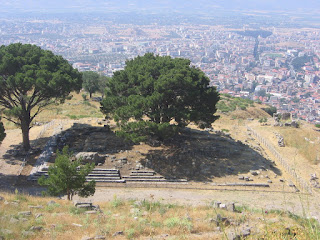I don't usually post articles simply to seek to invalidate them, but this article "Early Arabs Followed the Rain, or Didn't" seems particularly in need of some negative publicity. The researches compared weather data from 11,000-10,300 years ago to the Y chromosome in men from "from Turkey, Egypt, Oman, Iraq, Jordan, Syria and the United Arab Emirates." They then proceed to say that the two subgroups that they found in their study "corresponded to lifestyle as well as geography", with one group representing the descendants of farmers and the other the descendants of semi-nomadic herders. So, ancient people eventually adopted one lifestyle or the other on the basis of how the wetter or drier climate affected their DNA. The conclusion of the article wonders about the results of global warning...
Several points seem highly suspect in the article, but I think two are particularly worthy of mention. One, the researchers ignored history... samples of men from Turkey, Jordan, Syria, and Egypt are unlikely to turn up many people who would be genetically linked to people living in those areas 10,000+ years ago. The Turks came in waves from the East and conquered or lived in all of those areas. The Greeks had captured the area previously. The Romans, the Persians, the Chaldeans, Phoenicians, Assyrians, and others had all also spent time mixing the genetic history of this area.
Two, what the researchers are trying to prove genetically is completely bogus. Genetic biologist Richard Lewontin documents this throughout his book Biology as Ideology: The Doctrine of DNA. His chapters on genetics make this type of article look completely unscholarly. I read several portions of his book for my Philosophy of Science class this last semester, and I would highly recommend it to anyone who is combating genetic determinism.













